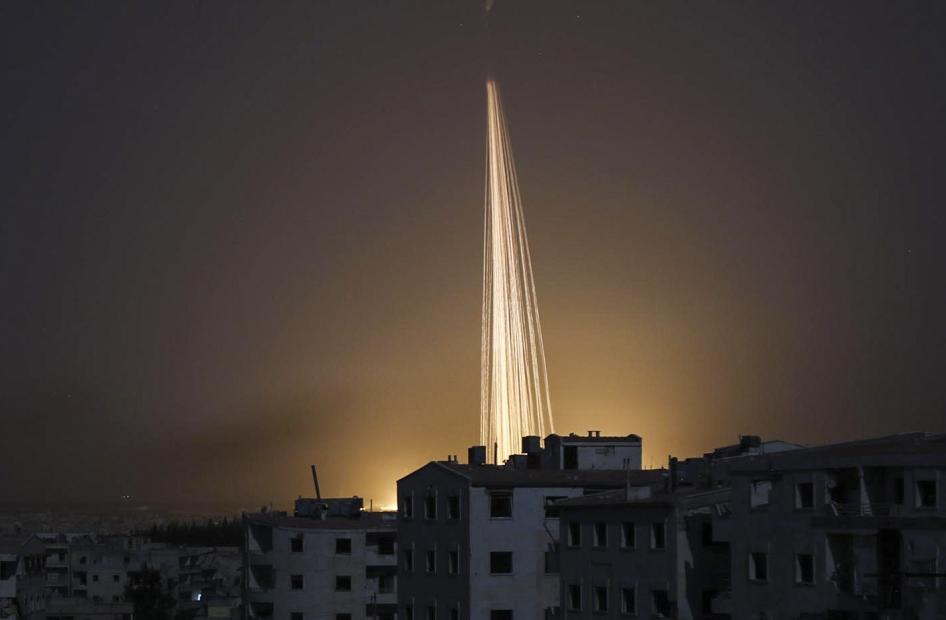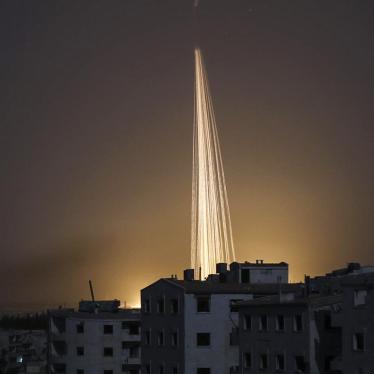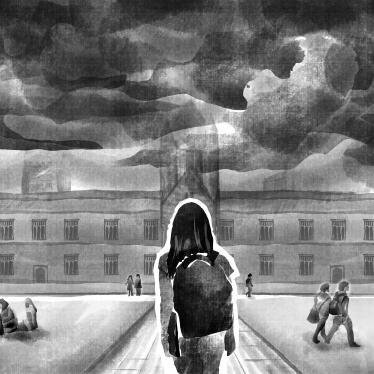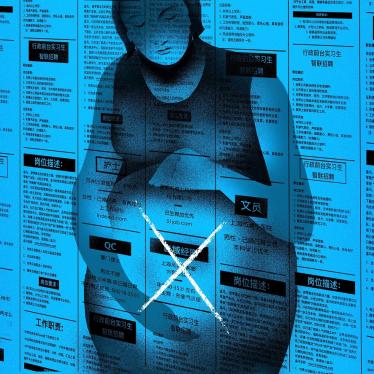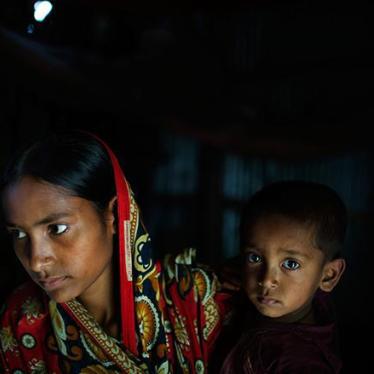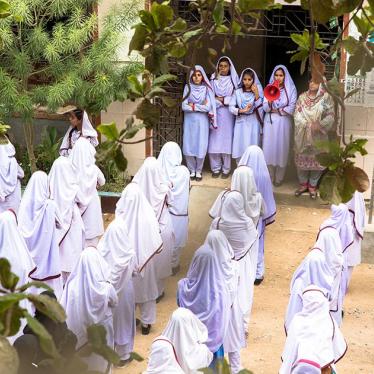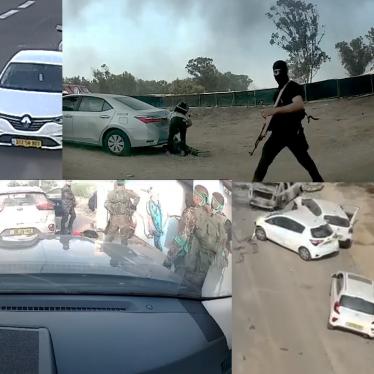(日内瓦)- 人权观察和哈佛法学院国际人权诊所今天共同发表报告指出,鉴于燃烧武器导致的骇人灼伤和终身痛苦,各国政府应尽速修正现行条约的相关标准。
这份45页的报告,《‘烧尽一切’:燃烧武器的人命代价与国际法的局限》,详细说明近年来武装冲突各方使用燃烧武器,包括白磷弹,所造成的直接伤害和长期的生理、心理与社会经济损伤。人权观察总结指出,这类武器既灼伤人类又焚毁平民房屋与财物,各国应修正并强化相关国际条约加以管制。
“当受害者忍受着燃烧武器的残酷后果,各国却还在为了是否对这种武器进行正式讨论而争论不休,” 人权观察武器问题高级研究员兼国际人权诊所武装冲突与平民保护副主任邦妮・杜克蒂(Bonnie Docherty)说。“各国应当正视幸存者的长期痛苦,解决现行国际法的缺陷。”
该报告基于对幸存者、目击者、战地医护人员、烧伤专家和其他专业人士的深度访谈,以及发表在各大医学期刊的深入探讨。其内容包括阿富汗、加沙和叙利亚等案例研究。
燃烧武器可以造成严重灼伤,有时深入骨骼,并可导致呼吸系统损伤、感染、休克和器官损坏。经过一段时间,大面积伤疤还会拉紧肌肉组织而造成肢体障碍。攻击带来的心理创伤及后续治疗的痛苦,以及改变外貌的疤痕,则会导致心理伤害与社会排斥。
严重烧伤的治疗过程原本就很艰苦,而武装冲突地区医疗资源的不足常使情况雪上加霜。与燃烧武器有关的长期身心障碍、医疗照护成本以及财产损失,都会对社会经济产生负面效应。
“燃烧武器会导致极其严重的灼伤,其破坏性远非一般烧烫伤所能比拟,” 曾在叙利亚诊治燃烧武器受害者的内科医生萝拉・贺兰姆(Rola Hallam)说。“它能烧尽一切。连钢铁都能被它烧毁,血肉之躯怎能受得了?”
1980年通过的《特定常规武器公约第三号议定书》专门管制燃烧武器,即各种通过易燃物质的化学反应产生热力和火焰的武器。但两个明显的漏洞局限了这部条约的有效性。首先,其定义以设计为本,排除了某些具有燃烧效果的多用途弹药,包括含有白磷者。其次,它对陆地投射燃烧武器的限制不及空投型弹药。
人权观察和哈佛国际人权诊所表示,尽管该条约缔约国多年来已对燃烧武器的使用表达忧虑,但当务之急是认真检讨第三号议定书的充分性。
特定常规武器公约年度会议预定于2020年11月11-13日在联合国日内瓦办事处举行。然而,由于有关疫情的新限制,这次会议据报已在开幕前几天宣告延期。
人权观察和哈佛国际人权诊所表示,虽然联合国尚未决定常规武器公约年会的新日期,各国应利用等待期间寻求支持,以采取行动解决燃烧武器问题。
未来几个月,常规武器公约缔约国应达成协议,在预定2021下半年举行的该公约五年审查会议上拨出时间,检讨第三议定书的充分性,并展开弥补该议定书漏洞的程序。
“已有许多国家表露意愿,对第三号议定书的局限进行深入评估,” 杜克蒂说。“少数拦路阻挠的国家应当认识到,审查和修订这一过时公约是人道主义的必要要求。”
案例研究
阿富汗
八岁的瑞兹亚(Razia)一家人住在阿富汗乡下的泥砖房子,2009年3月14日,来自交战某方的白磷弹落在她家,使她受到严重灼伤。尽管在巴格拉姆(Bagram)空军基地得到美国军医的治疗,她身上仍留下永久疤痕,导致长期的身心创伤。
“瑞兹亚痛得不停大哭,” 在巴格拉姆照顾瑞兹亚的创伤护理师柯林斯(Christine Collins)上尉说。“她还这么小,就被这样的事情毁了一生。” 柯林斯以个人身份补充说:“对于这种类型的武器,应该要有某种限制。这是绝对的,毫无疑问。”
加沙
2009年1月4日在加沙北部,以色列部队朝敌对的巴勒斯坦武装团体发射三枚155公厘白磷炮弹,炸穿了阿布・哈里马(Abu Halima)的住家屋顶。白磷产生的火焰直接造成家中五人死亡,另外五人受伤。
“所有东西都着火了,” 莎芭・阿布・哈里马(Sabah Abu Halima)说。“我先生和四个儿子活生生在我眼前着火;我唯一的女儿,还是个婴儿,在我怀中烧熔了。怎么能让一个母亲看着她的孩子们活生生被烧死?我救不了他们。我无能为力。”
叙利亚
叙利亚政府军2013年8月26日向乌鲁姆库布拉(Urum al-Kubra)一所学校投下一枚燃烧弹。
“当时景象真的就像是世界末日,” 治疗伤患的萝拉・贺兰姆医师说。“他们的衣服碎裂挂在身上。他们身上发出难闻的气味,混合着肉体灼伤的焦味和化学合成物的异味。⋯他们显然遭到严重烧伤。”
穆罕默德・阿西(Muhammed Assi)身上遍布疤痕,全身百分之85烧伤。“每次我出门,总是五到十分钟立刻回来,因为我不想在街上遇到人问我,“你身上怎会这样子?怎么烧伤的?” 他又说,“最糟的是我的小侄子都不敢靠近我,另一个侄子本来很喜欢抱我,现在也不敢跟我玩了。”

